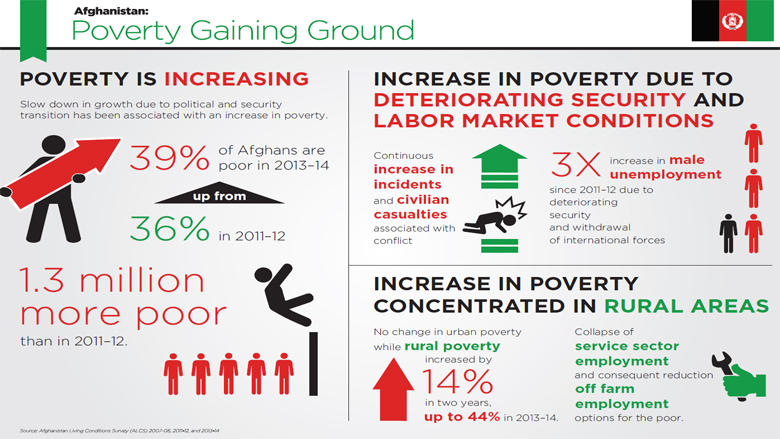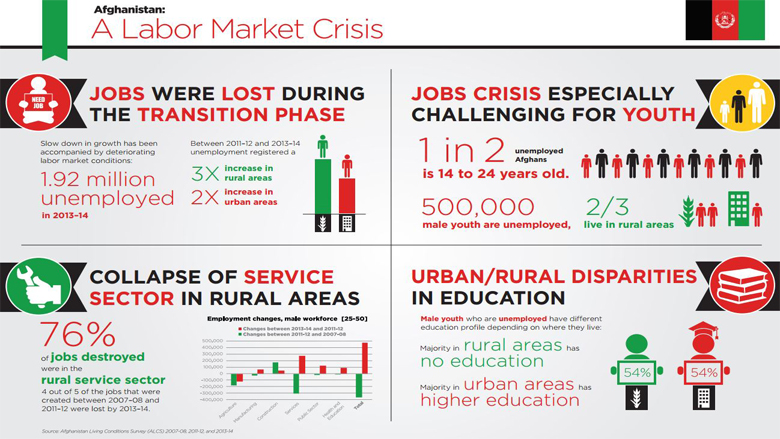May 08, 2017 – The second edition of the Poverty Status Update report, a joint effort of the Government of Afghanistan and the World Bank, shows that socio-economic progress is increasingly at risk in Afghanistan.
Afghan households have been negatively affected by the crisis triggered by the security and political transition. The decline in aid and growth damaged jobs, and the escalation of conflict further intensified the vulnerability of the Afghan people.
The poverty challenge has emerged in all its strength during the transition period. Absolute poverty is increasing, with about 39 percent of Afghans now poor. There are not enough jobs to meet the needs of a fast-growing labor force and provide livelihoods to illiterate and unskilled Afghans.
Moreover, the diffusion and intensification of conflict helps perpetuate poverty down to future generations as children miss school and more families flee their homes.

